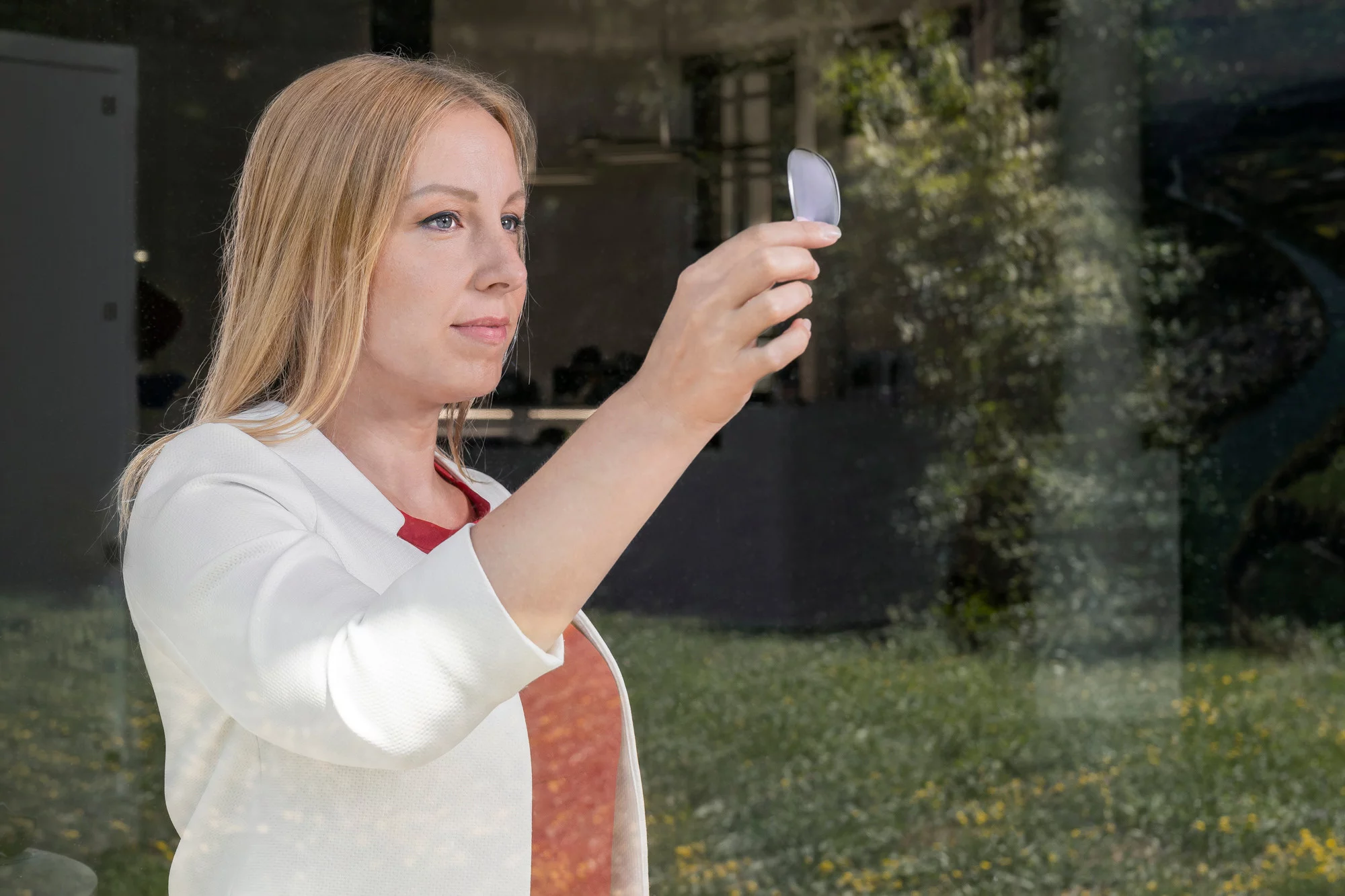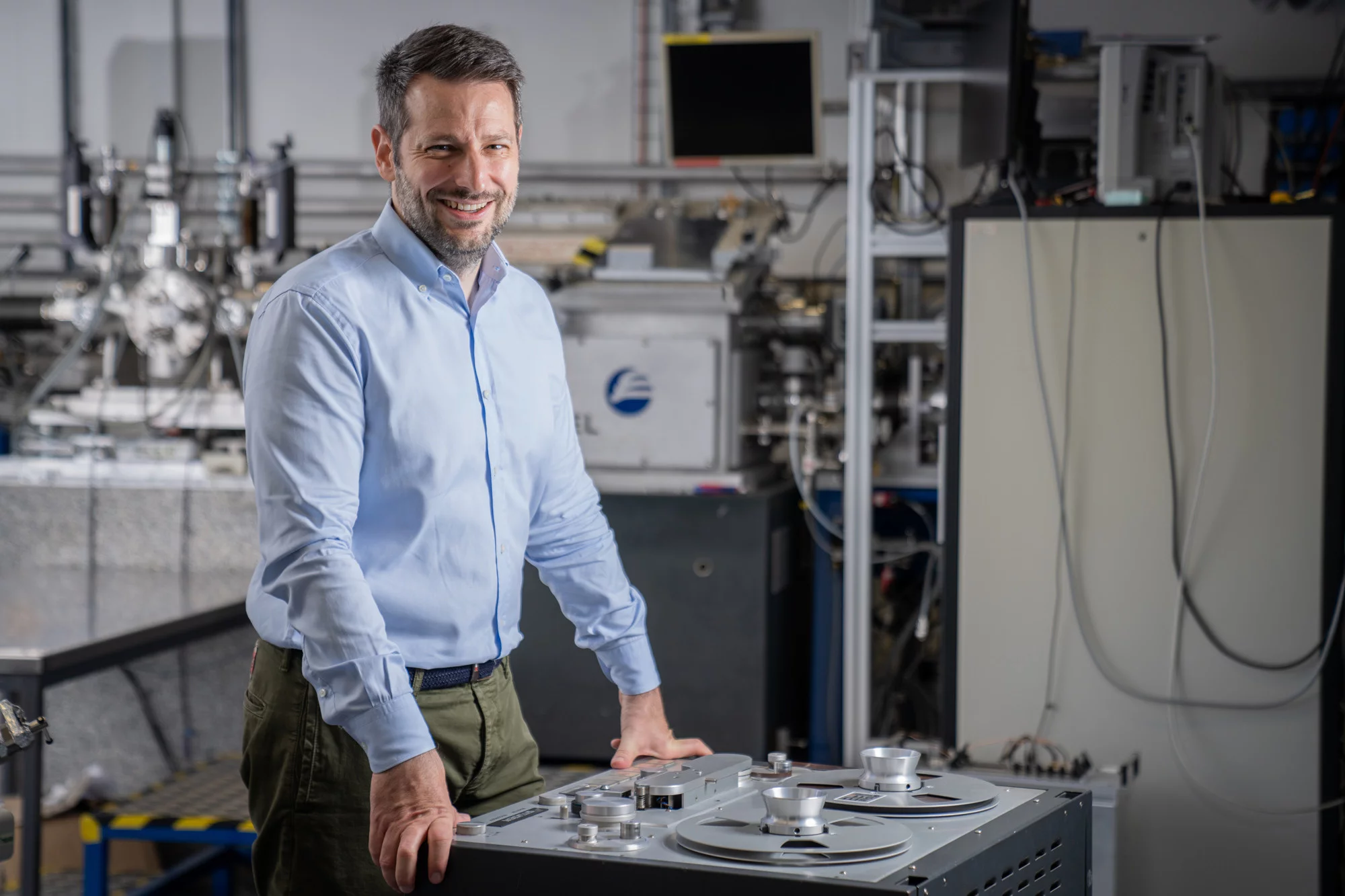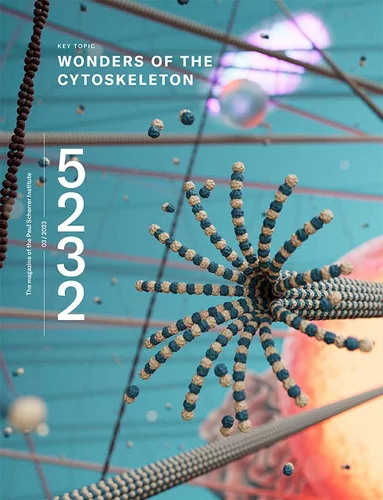Every year the PSI Founder Fellowship Programme supports new ideas for innovative applications with up to 150,000 Swiss francs. Whether smart glass or music restoration at the synchrotron – the resulting spin-offs are as diverse as the research at PSI.
Glass is no modern invention – in fact, archaeological finds show that this material has been manufactured and used by humans for more than 5,000 years. Glass is not only used as a vessel for fine wines – optical lenses are also ground from glass to make the smallest or most distant objects visible. Our communications flow through glass fibres in optical cables. Windows keep out the wind and rain while letting light pass through. The translucent material finds application in numerous areas of our civilisation. Yet glass is not just glass – we adapt it to our needs and reinvent it more or less constantly.
Barbara Horvath works with glass. The materials scientist, a candidate for the PSI Founder Fellowship, has been working to establish her spin-off Inveel since August of this year. Using tiny nanowires, the young entrepreneur wants to print electrodes on glass, for example to change its optical and electrical properties.
Smart glass
“One possible application for our technology is socalled switchable glass – also called smart glass,” Horvath explains. “That is a special material that can turn opaque, transparent dark or coloured, automatically or at the touch of a button.” This capability is enabled by a thin nanostructured coating sandwiched between two panes of glass. When electrical charges are applied to this layer, it becomes optically active and can change its colour as a result. This not only puts privacy at your fingertips, but can also be used to regulate the temperature in buildings.
The invention itself is not new. Such glass is already in use for windows in modern office buildings and aircraft, for example. However, producing them is very complex and thus costly. “To be able to apply the weak electrical charges to the switchable glass, thin wires must be accommodated – so thin that they will not impair visibility,” Horvath explains.
During her work at PSI, Horvath and her group leader Helmut Schift developed a method for the production of such fine conductor tracks. “Our method makes it possible to produce wires with a diameter of around one hundred nanometres,” the scientist explains. It functions much like a printer: nanoparticles are applied as liquid droplets and fuse together to form linear structures. This allows large areas to be printed with extremely fine, parallel conductors. Using conductive materials such as silver and gold, a wide variety of surfaces can be furnished with invisible electronics quickly and inexpensively.
Switchable glass is just one possible application. The nanowires could also be used to change the direction of polarisation of incident light in the glass so that only certain wavelengths penetrate. This could be used, for example, for temperature control in greenhouses or for laser protection in eyeglasses. “In the laboratory, we have shown that the technology works in principle,” Horvath adds. “The Founder Fellowship has now made it possible for us to take the next step towards practical applications.”
Researchers today – entrepreneurs tomorrow
Just like Barbara Horvath, researchers from all areas of PSI submit proposals to this coveted programme every year. “It’s often a long way from a promising research result to a marketable and innovative product,” explains Angelo Sozzi from PSI’s Technology Transfer – together with his team, he coordinates the Founder Fellowship, offers courses and coaching, and supports the entrepreneurs in their ambitious undertakings.
“When researchers decide to pursue such a career path, the initial focus is on deepening the business idea, preparing the market and creating a business plan,” adds the entrepreneurship coach. “In business, in contrast to fundamental research, the further development of technology is directly subject to commercial interests.” Each winner receives a one-time sum of 150,000 Swiss francs – money that the winners are responsible for apportioning themselves, as with an investment. The fellowship also allows researchers to maintain access to PSI for up to 18 months. During this time it is important to find a market and establish a viable business plan.
Particularly important for the commercialisation of innovative technologies are the use of the PSI infrastructure and the exchange with other researchers on the PSI campus. Access to large research facilities and specialised laboratory equipment would otherwise be unaffordable or completely unavailable. In this way, Barbara Horvath can continue to work in her familiar environment and benefit from the exchange with her colleagues. In the case of Sebastian Gliga, likewise a PSI Founder Fellow, having his own lab far away from PSI would have been impossible. For his business idea, the physicist uses the Swiss Light Source SLS – he wants to use it to digitise the recordings on old music tapes.
Music from the synchrotron
At this point magnetic tapes have almost completely disappeared from our lives and enjoy only a nostalgic niche existence. In the archives of recording studios, radio and TV broadcasters, museums and private collections, however, there are still vast quantities of these analogue data carriers. Sebastian Gliga adds: “Only a fraction of all these recordings have been digitised so far.” It’s not just about our cultural heritage; in the age of digital music platforms such as Spotify and the business of music licensing, real treasures are slumbering in these archives, and sometimes no effort is spared to restore and digitise forgotten tapes by wellknown artists in the highest quality.
But why do you need a synchrotron for this? “Recording tapes are not made for eternity,” Gliga explains. “The material disintegrates and can no longer be played back – with the X-rays from the synchrotron, however, such recordings can be restored without contact.”
Recording tapes store information in a layer of tiny magnetic particles – like tiny compass needles that point either south or north. When sound is recorded on the tape, their alignment changes – the tape becomes magnetised, and the audio information is now physically stored in the alignment pattern. To replay this pattern, the tape is moved past a read head. Since the magnetic field is constantly changing due to the pattern, an electrical signal is generated, which in turn can be amplified and converted into an acoustic signal.
To make music on damaged tapes audible again, Gliga does not rely on the magnetic field, but rather on the individual compass needles that generate this field. “The magnetisation states of these tiny particles, whose size is less than a tenth of the diameter of a human hair, can be read out almost individually in the synchrotron and converted into a high-quality audio signal.”
Giliga is collaborating with the Swiss National Sound Archives and the Montreux Jazz Digital Project – launched in 2010 by EPFL and the Claude Nobs Foundation to digitise, preserve and enhance the audiovisual collection of the Montreux Jazz Festival – to develop his method further. “We want to create the ultimate copy – the best quality for the best music,” the physicist adds with a smile.
Text: Benjamin A. Senn
Copyright
PSI provides image and/or video material free of charge for media coverage of the content of the above text. Use of this material for other purposes is not permitted. This also includes the transfer of the image and video material into databases as well as sale by third parties.



